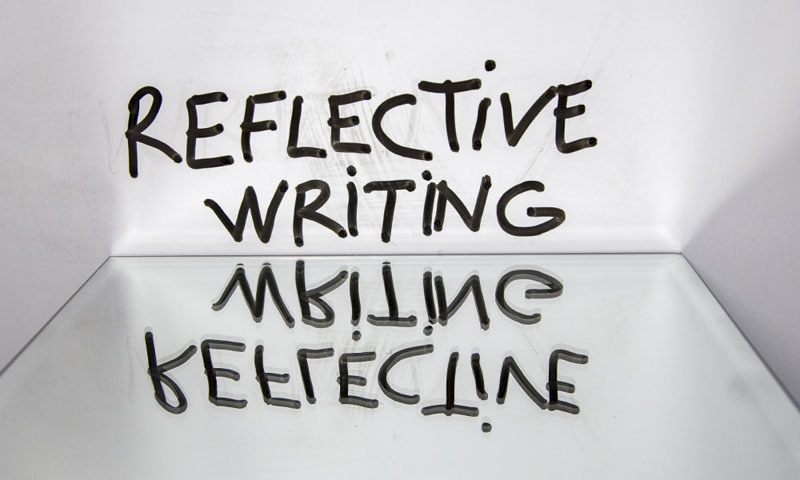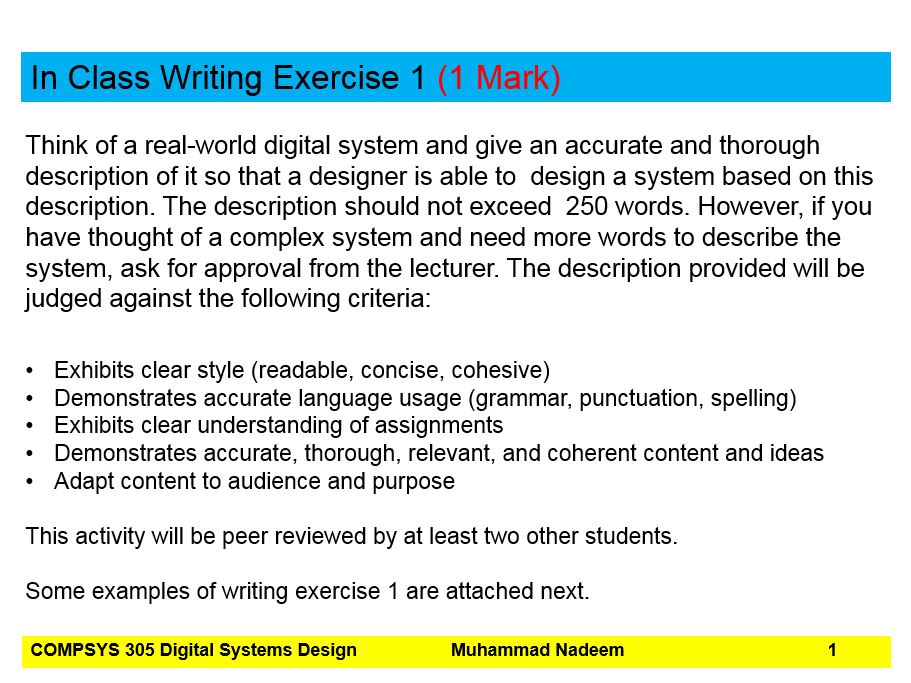A resource for stimulating thinking, writing and in-class engagement for Engineering students
This project’s resources were originally developed to explore the use of writing activities in Engineering courses at the undergraduate and postgraduate levels. The project was implemented collaboratively by Tajammal Munir and Muhammad Nadeem from the Faculty of Engineering at the University of Auckland. It was trialled with an online tool that students used to write technical and/or non-technical answers to scenario-based questions.
These resources might be useful to any teachers seeking to foster critical thinking and communication skills in learners with English as an additional language and/or for teachers working in areas where attention needs to fall upon these issues.
The project was supported by the SEED Fund grants for 2017.
For similar projects, see: Technical Writing to Improve Understanding of Threshold Engineering Concepts, Experience-based Learning: Engineering Systems Thinking and Writing Code the Visual and Kinesthetic Way.

Project background
In this project, Taj and Nadeem aimed to explore “the benefits and challenges of using writing activities in Engineering courses at the undergraduate and postgraduate levels.” They envisaged that integrating writing activities into the classroom would encourage active learning, critical thinking and the development of communication skills. They planned to use an online tool for asking scenario-based questions to students during the lecture and recording the students’ written responses.
In their proposal for the SEED Fund grant, Taj and Nadeem named two in-class writing exercises, each 15 minutes in duration, which would be used for the purpose of this activity. The exercise would be held twice, during the fourth and sixth weeks of the study. A mock session would be conducted during the second week of the study, “to familiarise the students with this exercise”. The students would be required to write one or several paragraphs in response to a scenario-based question presented to them in the class. For the purpose, the students would be advised to bring a digital device (a phone, a tablet, a laptop) to the classroom.
Students would produce two pieces of writing:
1) A piece of technical writing containing some technical message for a specialized audience (the text may include use of discipline-specific jargon); and
2) Another piece of writing aimed at a nontechnical or general audience with a purpose of conveying the idea in simplified form and simple language without the use of jargon.
As Taj and Nadeem explained, “Students [would] be able to carry out the writing activities on a piece of paper or using online tools. The popularity of digital devices has made it possible to use them for engaging the students in the class, as almost all of the students own some digital device which can access the internet. The use of on-line tool has the added advantage of easy and efficient administration of the activities. It also provides effective means for data analysis and produces different reports, which is especially useful to the academic staff whose job is becoming challenging due to increasing number of students at tertiary level, increasing pressure on different work duties (administration, research), and the need to prepare students for new and changing demands from the engineering industry. With technology being extensively used for practical purposes in other fields (driving tests, flight simulators, IELTS), it seems the university is not getting full advantages of advances in technology.”
The team planned to explore various online tools to find out the most suitable tool for accomplishing such kind of activities. There are already a few free e-tools available which are being used for student engagement and assessment (e.g., Google Docs). Taj and Nadeem wanted to find “an online tool which has capabilities such as online student engagement, student analytics, work in real-time, user-friendliness, and the ability to present the results in a visual and easy-to-understand way.”
The SEED Grant helped both teachers to do a proof of concept and create the initial version of learning by writing project for Engineering students.
See below to read Taj and Nadeem’s reflection on their project.
Project reflection
What we did
We integrated writing exercises into the classroom activities. Students were asked scenario-based questions which contained problems and concepts from real-world situations. The students were required to respond with one or more paragraphs using their digital devices. For each question, students needed to provide two pieces of writing, one for a technical audience and another for a non-technical audience. Students’ online responses were recorded, assessed and feedback was provided to help them during their learning process.
Our project’s objectives
In Engineering, there is a massive influx of international students who are not confident in speaking English and are therefore reluctant to talk and participate in discussion during class. This project aimed to improve these students’ class participation by minimising the effect of communication barriers. By integrating writing activities into the classroom, the team hoped to address issues of student engagement and develop students’ critical thinking and communication skills, which receive scant attention in Engineering courses.
What went well? What was unexpected?
Students were reluctant to participate at the start of the semester. They were concerned about the amount of time they expected to spend on this writing activity. This may be due to the fact that the idea was new for the majority of them — they had mainly been exposed to a traditional lecture approach. By the end of the semester, students began to like the idea of learning by writing, perhaps because they began to realise that this active learning helped them develop skills like critical thinking and effective communication with both general and technical audiences.
Contribution to our students’ learning
After talking to students, getting their feedback, and observing their engagement in the class, we concluded that the project had indeed contributed to students’ learning.
How did the project contribute to our learning?
The project helped us to explore a better way to engage students who are shy and less active in class. Writing provided students with an alternative way to communicate with the class and develop their critical thinking and communication skills.
Will we continue with this initiative beyond the grant period?
Yes, we plan to continue this initiative beyond the grant period. We want to publish an article on this work but, unfortunately, due to lack of ethics approval, we could not get sufficient student feedback and other data for a publication. We are currently preparing an ethics approval application.
The data about students’ progress will be collected using the following methods:
- Student grades available through Canvas
- Student feedback (written or verbal)
- Student peer observation
We plan to involve multiple stakeholders in the project: end-users (students and teachers), course coordinator, teaching assistant and Centre for Learning and Research in Higher Education (CLeaR).
The success of the proposed project will be measured using two main indicators:
- uptake percentages
- user satisfaction
For user satisfaction, questionnaires or surveys can be conducted. We expect to get constructive feedback from users in different departments about any inefficiencies. Email surveys, online surveys, roundtable discussions, and one-on-one discussions can be helpful for this purpose. We can use that feedback to plan potential changes to develop this project further.
Project resources
 A further selection of writing exercises can be found here.
A further selection of writing exercises can be found here.